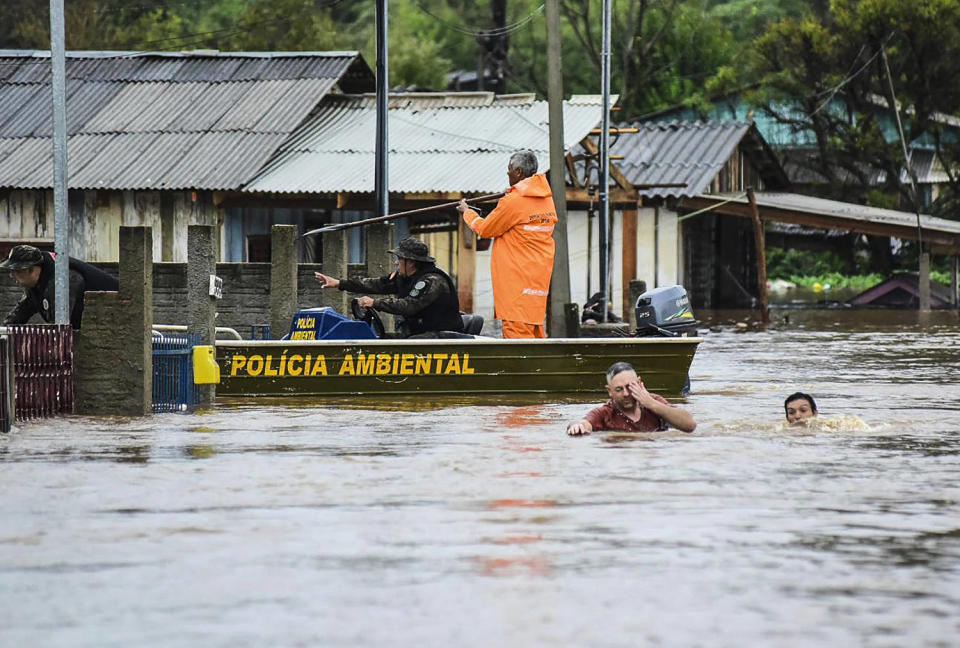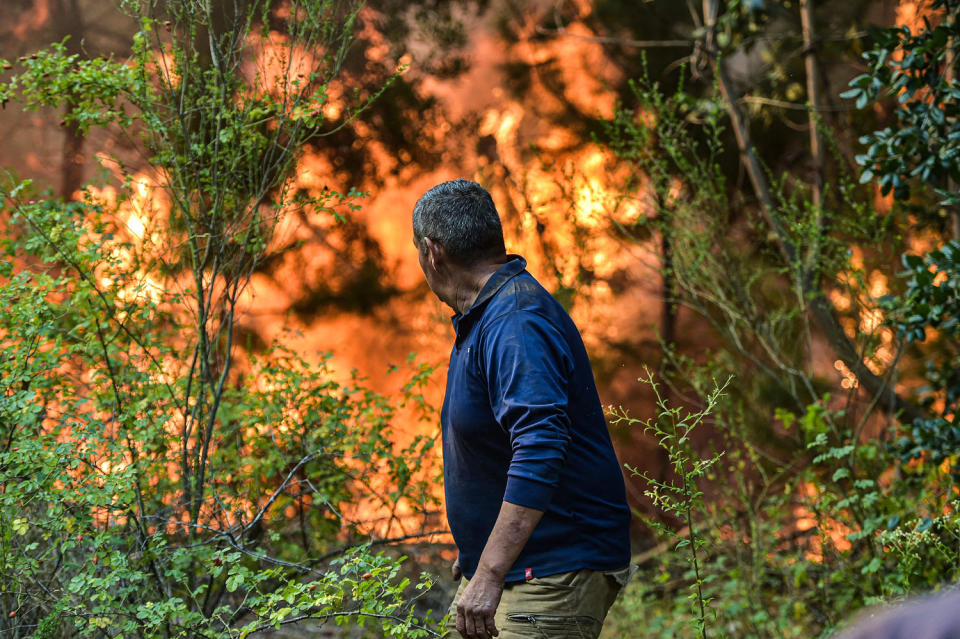The spread of false narratives about three recent extreme weather events in Latin America shows how misinformation about climate change in Spanish and Portuguese can undermine efforts to address and mitigate the effects of global warming in the region, according to a new study published Wednesday.
Environmental organizations Roots and Friends of the Earth, part of the Climate Action Coalition Against Disinformation, have conducted progressive research to analyze how hurricane floods in Brazil and Peru, as well as wildfires in Chile, have become fertile ground for the spread of misinformation online. commissioned his firm Purpose.
Online posts in Brazil, Peru and Chile falsely attributed the incidents to dam breaks, arson and climate research centers that study the atmosphere, the investigation found; It has created confusion, distorted conversations about extreme weather preparedness, and politicized climate action.
Max MacBride, counter-disinformation lead at Roots, said in a statement that the new research points to a “troubled cycle.”
a few cconspiracy theory posts and a huge reach on the internet
In September, a hurricane hit the southern Brazilian state of Rio Grande do Sul. The storm’s unusually heavy rains and high winds caused massive flooding and landslides that killed more than 30 people and severely damaged countless homes.
While online news outlets reported on the flooding in the context of a climate disaster, disinformation spreaders falsely claimed that the floods were caused by the opening of three dam gates.
According to the investigation, the false narrative began circulating a few days after the storm, when center-right local leaders in the region publicly asked the company operating the dams about “opening the gates,” as stated in a press release. The company responded by saying there was no evidence to suggest the dams affected flooding.

The Brazilian state’s environment ministry later confirmed that the floods were caused by the hurricane and had no connection to the dams, but the false story continued to spread online.
The study examined 66,800 flood- and hurricane-related posts, including posts on social media site X and comments on the news portal. A small number of people (1,800 posts) were also seen discussing floodgates. But this small portion reached a significantly larger audience of more than 5.2 million people, demonstrating how social media algorithms can amplify misinformation.
“We cannot protect people in Latin America from climate change if professional disinformationists continue to manipulate weather disasters by gaming social media algorithms,” Michael Khoo, director of the climate disinformation program at Friends of the Earth, said in a statement.
X did not respond to a request for comment.
In Brazil, videos and discussions posted on TikTok and YouTube spread misinformation and conspiracy theories about open dam gates rather than hurricanes causing the floods. These garnered hundreds of thousands of views and were key to the spread of such misinformation on both platforms.
TikTok said it was banning misinformation about climate change that undermines well-established scientific consensus. The platform relies on moderators, experts, and fact-checkers to monitor content, and users can also use TikTok’s misinformation reporting tool to report false content.
YouTube did not respond to a request for comment but had previously shared with NBC News some of its efforts to combat climate misinformation in languages other than English. A spokesperson said in August that YouTube’s systems generally “do not recommend or prominently surface content containing misinformation about climate change,” instead highlighting videos from authoritative sources in search results and recommendations. It also implements “monetization policies that prohibit advertising that contradicts the authoritative scientific consensus on the existence of climate change and the causes behind it.”
The study also cites a Brazilian local newspaper investigation that found misinformation was being spread on WhatsApp about the dam that caused the floods. It is understood that hundreds of thousands of people watched the videos shared on the encrypted messaging application containing false claims that politicized the disaster, as the dam at the center of misinformation was built by the ruling left party.
Meta, the parent company of Facebook and WhatsApp, did not respond to a request for comment.
Like Brazil, Peru was devastated by a hurricane in March. Cyclone Yaku killed more than 50 people and damaged more than 20,000 homes.
Following the storm, posts appeared on social media suggesting that Hurricane Yaku was created by Peru’s Jicamarca Observatory, a radar and HAARP that studies parts of the atmosphere and has long been the target of conspiracy theories and even flat Earth theories. The facility was also used to study parts of the atmosphere.
Spanish-language climate misinformation regarding HAARP is incredibly widespread around the world; study researchers identified 10,655 posts across multiple social media platforms between Jan. 1 and Oct. 5. According to the research, the total reach of the posts reached more than 32.2 million people.
However, the presence of the Jicamarca Observatory in Peru served as a link to connect the broader HAARP conspiracy theory to Hurricane Yaku.
Researchers found that such posts garner hundreds of thousands of views across many social media platforms, including X, TikTok, and Facebook.
Making arson the ‘only cause’ of forest fires
According to the research, there were more than 400 forest fires in February due to extreme heat and drought in parts of cities in the central and southern regions of Chile, while a small number of posts on X blaming the fires solely on arsonists gained over a million views. .
Wildfires at the time were primarily caused by a combination of factors: a historic drought, a persistent heat wave, and an increase in the amount of derelict farmland vulnerable to wildfires.
However, in Chile, local authorities arrested at least 17 people for allegedly starting some forest fires, either intentionally or negligently, while engaging in activities such as welding and burning animal wool.
These arrests were followed by Chilean political leaders, primarily right-wing and conservative, who falsely claimed that arson was the “sole cause of devastating forest fires,” the report said, according to the investigation.


When researchers analyzed a random sample of 20,000 X posts and news portal comments, they found 184 posts containing the words “arsonist” or “terrorist.” These posts reached more than 1.5 million people, thanks in part to high-profile people sharing them online, according to the study.
This helped distract online chat from the impact of climate change and how it could worsen wildfires, the study found, by suggesting that criminal actions were the cause of worsening fires.
According to the report, online misinformation surrounding the three incidents pinned blame for the destruction on a specific “scapegoat, inciting anger in local audiences” and perpetuated political divisions or existing false narratives, such as HAARP changing the weather, and as a result, sidetracked the conversation. Stay away from ongoing climate problems and ways to solve them.
While some social media companies have implemented content moderation guidelines to block climate change-related misinformation on their platforms, members of the Climate Action Coalition Against Disinformation say they need to “take much stronger action to stop the spread of misinformation online” in all languages, MacBride and Khoo said.
This article first appeared on NBCNews.com.